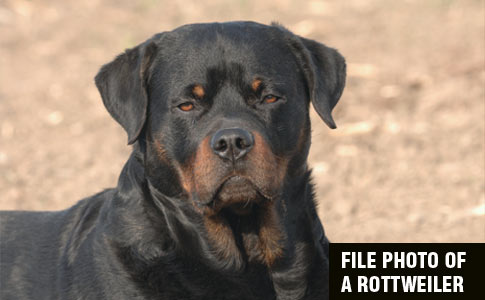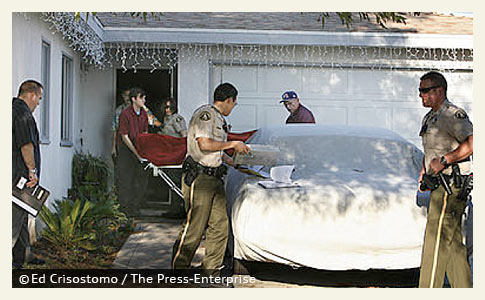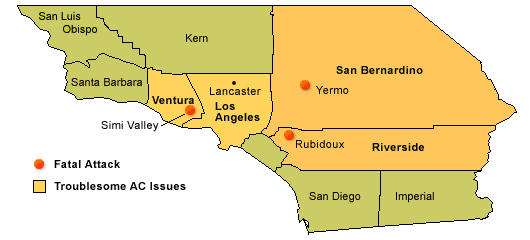
Alex Angulo, 4-years old, was killed by at least one of his foster family's rottweilers.
Foster Families May Face New Rules
UPDATE 01/14/09: In response to the recent dog mauling death of 4-year old Alex Angulo by his foster family's rottweiler, Rep. Rosemary Mulligan (R-Des Plaines) said the Illinois House committee that oversees the Department of Children and Family Services might consider tough legislation outlawing dangerous dogs in foster homes. DCFS officials are awaiting results of an independent inquiry by a Child Death Review Team before deciding to make any changes.
The Cook County Public Guardian also on Tuesday called for more stringent controls over how foster families with animals keep a child safe, saying it's too easy for small children to accidentally provoke animals.
"There should be a whole protocol for issues of pets in general,'' Cook County Public Guardian Robert Harris said. - Chicago Sun-Times, January 14, 2009
01/14/09: Child Agency Questioned
The case of Alex Angulo, who was killed by one of his foster family's rottweilers, continues to grow more tragic. After being tossed around to several homes, in 2007 he was placed with a 77-year-old woman who had just renewed a foster-care license that was originally granted in 2000, according to DCFS officials. Though Alex had some behavioral issues, he showed a positive attitude in school and overall, state records showed that the foster home seemed to be working.
After the placement, workers found that Alex's foster mother was "maintaining a safe and appropriate environment" for the boy. His foster mother loved the boy like her own son, records noted. But in December, a Juvenile Court judge determined that Alex's foster home was not a good fit in the long run because of his foster mother's advanced age. The goal was to move him to a home in which the parents could eventually adopt him. This move would never happen.
One week prior to the move, Alex was killed by his foster family's dog.
Kendall Marlowe, a spokesman for the Illinois Department of Children and Family Services said, "There was an understanding that the dogs lived outside, and the child would not have unsupervised contact with the dogs." Cook County Public Guardian Robert Harris said those precautions were not adequate or even realistic. "Don't place a 4-year-old in a home with two big wild dogs," Harris said. "You don't just say, 'OK, the kid won't go out into the yard,'" he said.
01/12/09: All Three Dogs Euthanized archived
Chicago, IL - In a developing story, a 4-year old boy was mauled to death by at least one rottweiler on Chicago's Southwest Side. Three dogs were removed from the home; two rottweilers and a poodle. One of the two rottweilers is believed to be responsible for killing 4-year-old Alex Angulo. A fire department spokesperson says the boys' father was out front using a snow blower while the child was in the backyard playing with the dog when the animal attacked and killed him.
Neighbors said the family had put in a fence recently, trying to make sure the dogs did not get onto the sidewalk or into the street. A "Beware of Dog" sign also hangs from the home's tall wooden fence. Other neighbors reported the dogs were menacing and that they were afraid of them. It is unknown if any of the dogs had previous biting incidents. The Department of Children and Family Services is investigating an allegation of neglect in connection with Alex's mauling death.
Related Articles:
10/18/08: Rottweiler Inflicts 3,000 Stitches on Victim; Judge Frees Dog
04/07/08: Surgery Helps 6-Year Old Recover from Rottweiler Attack

 12/22/08 | A website devoted to stopping communities from enacting breed-specific laws -- Stop-BSL.com -- has been giving parts of donations received to persons charged with dogfighting. The Internet WHOIS records show that the website is registered to Allie Renar who operates the Northern Light Kennels in Spokane, Washington. In September, she was briefly interviewed by kxly.com about a proposed pit bull ban in Spokane.
12/22/08 | A website devoted to stopping communities from enacting breed-specific laws -- Stop-BSL.com -- has been giving parts of donations received to persons charged with dogfighting. The Internet WHOIS records show that the website is registered to Allie Renar who operates the Northern Light Kennels in Spokane, Washington. In September, she was briefly interviewed by kxly.com about a proposed pit bull ban in Spokane.





